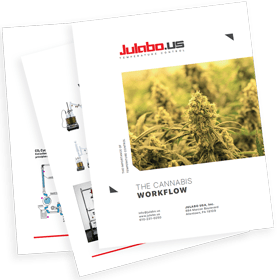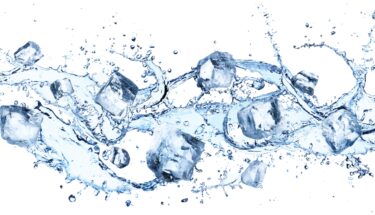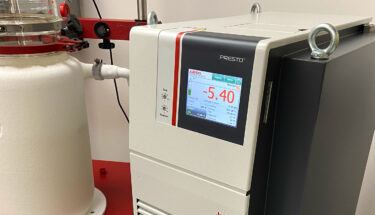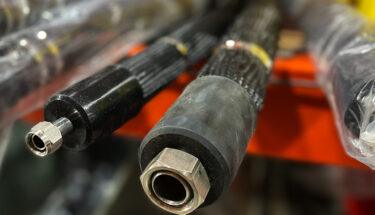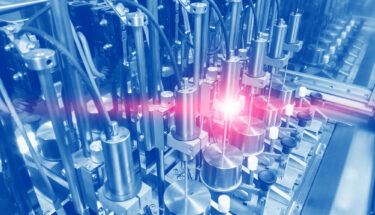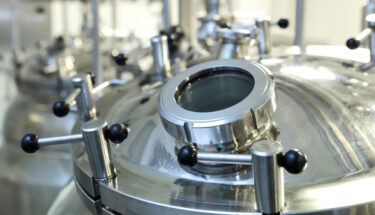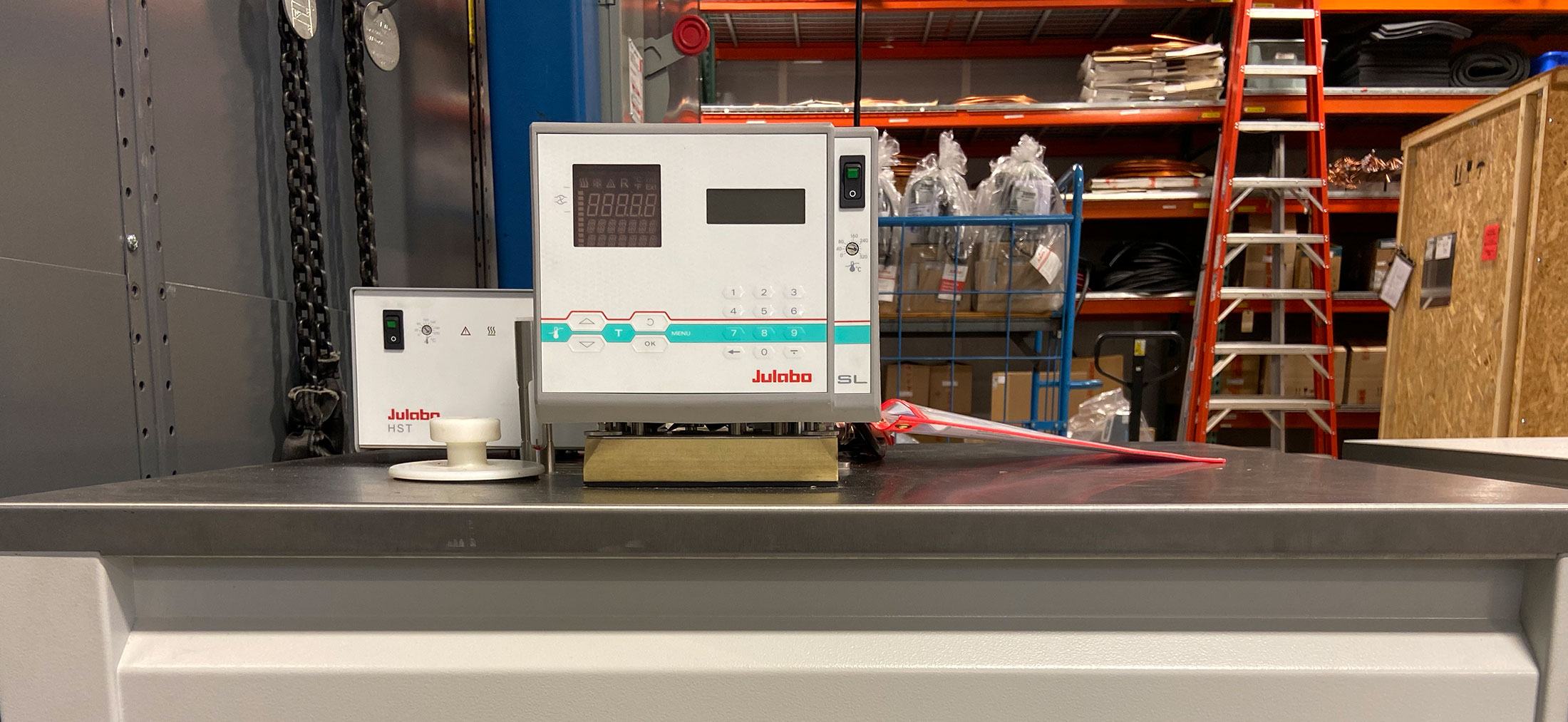
How to Size a Chiller for a Condensing Application
by Mark Diener, Sr. Product Manager & Application Scientist/Chemist
In this article, we’ll explore some important technical aspects related to cooling power for condensing applications. We’ll cover how to size a chiller for your application, factors to consider when using different solvents with different condensation temperatures, and why cooling capacities matter. Whether you’re in a production/pilot plant or process development laboratory, cooling power plays an integral role in successfully and efficiently condensing vapors to liquids. Knowing how to determine the necessary cooling power for a condensing application ensures the process’s proper operation and safety and significantly influences your results and reliability.
Calculate First
Before approaching the distillation process calculation, you will need to know several factors. Let’s start with the most straightforward situation by calculating the cooling power required for an application that will run the same process (i.e., no variation of the solvent). Note: If you don’t want to do the calculation yourself, you can share this information with your JULABO USA representative, who will gladly do it for you.
Factors to identify:
Solvent
Desired evaporation rate (ΔV/Δt) in GPH or L/h
Mixture temperature (vapor temperature)
Condensate temperature (temperature of the condenser)
From these variables, we’ll use two equations to calculate the required condensing and subcooling loads. Together these equations determine the required cooling capacity for the process.
Here we go – equation time!
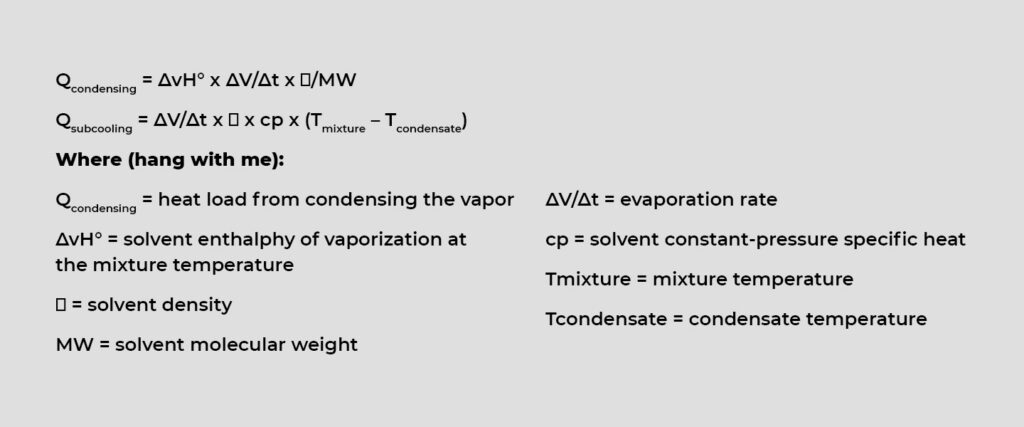
Qcondensing = ΔvH° x ΔV/Δt x ρ/MW
Qsubcooling = ΔV/Δt x ρ x cp x (Tmixture – Tcondensate)
Where (hang with me):
Qcondensing = heat load from condensing the vapor
ΔV/Δt = evaporation rate
ΔvH° = solvent enthalphy of vaporization at the mixture temperature
cp = solvent constant-pressure specific heat
ΔvH° = solvent enthalphy of vaporization at the mixture temperature
Tmixture = mixture temperature
ρ = solvent density
Tcondensate = condensate temperature
MW = solvent molecular weight
Let’s put this to use with the following scenario. A water distillation process requires a distillation rate (ΔvH°) of 20 liters per hour (L/h) with a mixture temperature of 176 °F (80 °C) and the desired condensate temperature of 68 °F (20 °C). We then use the following constants for the solvent → water.
Density (ρ) = 0.995 kg/L
Molecular weight (MW) = 18.92 g/mol
Specific heat of liquid (cp) = 4.186 kJ/kg K
Enthalpy of vaporization (ΔvH°) = 40.657 kJ/mol
Then, using those values in the two equations yields the following:
Condensing heat load = 12,509 W
Subcooling heat load = 1,393 W
Adding them together yields a total heat load of 13,902 W or 13.9 kW. In other words, a chiller needs to remove 13.9 kW of heat in the condenser.
We always add a capacity safety factor to the total value before sizing the chiller. We recommend at least a 25% increase in capacity to account for efficiency losses due to heat loss and other factors. In this case, a chiller with 17.5 kW or more cooling power will prove effective.
Recirculating Chiller Options for 17.5kW Cooling Capacity
JULABO USA offers several chillers with 17.5+kW of cooling capacity to meet the needs of this example, including the F250 or FL601 for 5L rotary evaporators, the FL2503 or FL4003 for 20 L units, and the FL7006, FL11006, and FL20006 for 50L rotary evaporators. If you don’t need 17.5+kW of cooling power, don’t worry, we have many other recirculating chiller options available, including units that meet NRTL and CSA certifications.
Calculating Cooling Capacities for Applications Using Different Solvents
Facilities that conduct distillations with various solvents and distillation rates on the same evaporation system face a slightly different dilemma. All possible solvent and distillation rate combinations will require a calculation to determine which process requires the most cooling power. Keep in mind that as the temperature lowers for a distillation (e.g., low boiling solvents), a chiller’s cooling capacity lowers as well. Comparing the different cooling power values requires analysis to determine which distillation process has the highest heat load and requires the most cooling power. This might require reducing the distillation rate of some processes (thus lowering the chiller’s necessary cooling power) to achieve proper condensation without overwhelming the chiller.
Why Cooling Capacities Matter & What Can Happen with Inadequate Cooling
Problems can occur when you don’t have adequate cooling power for the application. Typically, problems arise with chiller cooling capacity in these two scenarios:
An undersized chiller is paired with the application.
An undersized chiller will not meet the targeted distillation rate. The chiller temperature will rise from the desired condenser set point and not meet the temperature or distillation rate. If you encounter a chiller temperature that continues to rise, this indicates incomplete vapor condensation on the condenser, leading to potential issues with the effect of solvent vapor in the vacuum system. To remedy the situation, you’ll need a chiller with more cooling power.
The chiller is sized properly for a specific distillation rate but the user pushes the original distillation rate.
A properly sized chiller will operate for the defined distillation rate. However, if a user attempts to push the distillation rate higher, the chiller may fail to hold the desired condenser temperature. If you see this happening, it indicates that the load on the condenser has exceeded the chiller’s cooling capacity. This generally won’t harm the chiller. Chillers, like the ones from JULABO USA, can operate at 100% capacity, but operating an inefficient process defeats the purpose. If you want to push your distillation rate, it will require a chiller with more cooling power.
Helping It Make Sense
Whether you’re using your condensing application in a pharmaceutical or biopharmaceutical lab or in the cannabis or chemical industry, adequately calculating the cooling power can make or break your results and your process. If these calculations seem overwhelming or too time-consuming, don’t worry. Our account managers and technical experts are on standby to do the math for you and help you select precisely the right chiller for your process and facility. Our chillers offer intelligent features that can produce safe, reliable, reproducible, and accurate results. Reach out to us, and let’s get you the cooling power you need to optimize your condensing applications.

